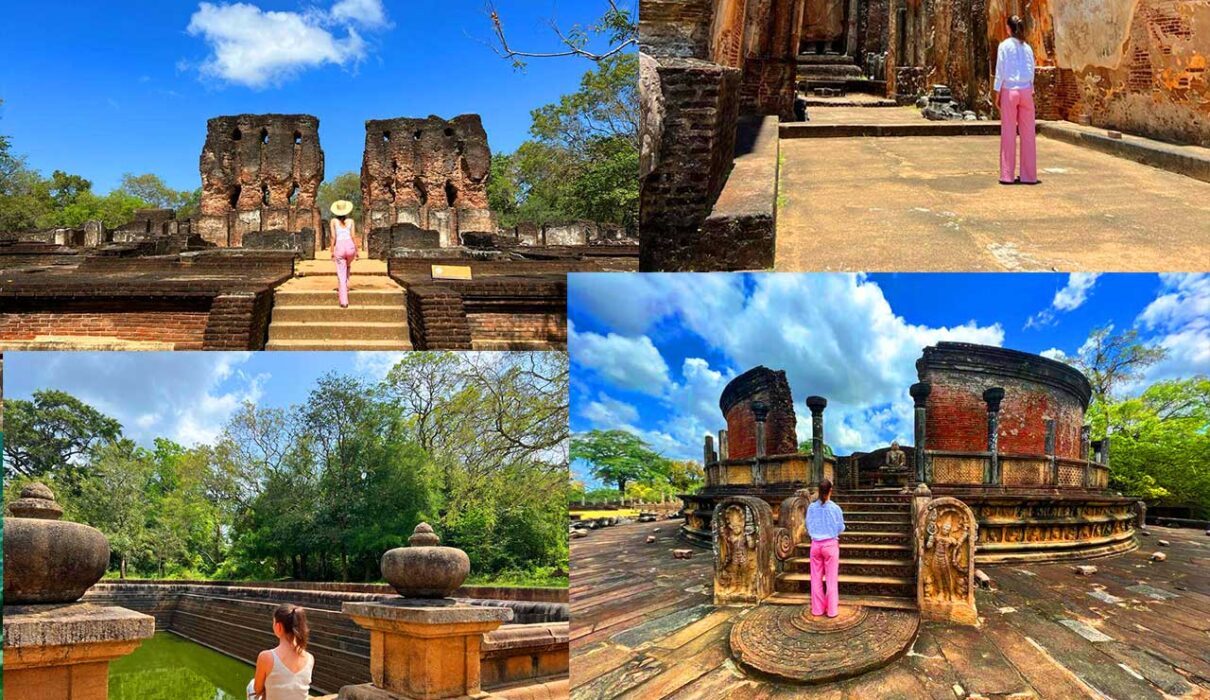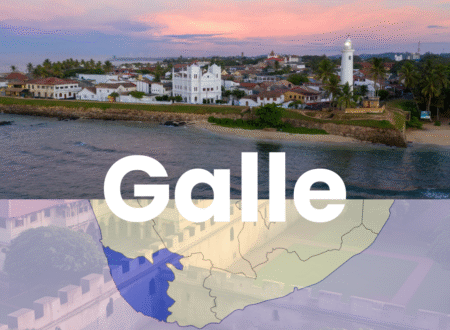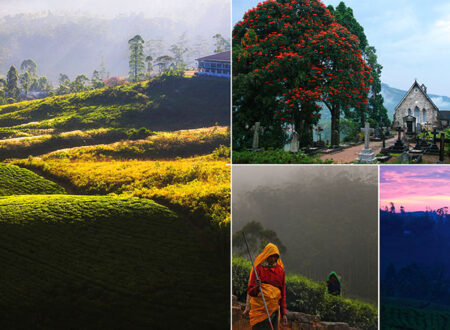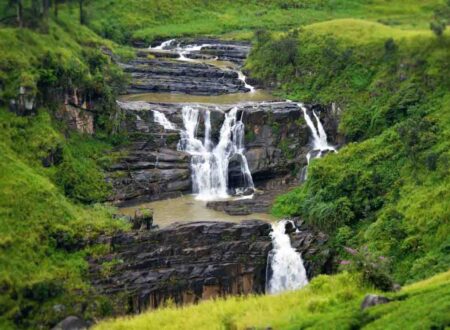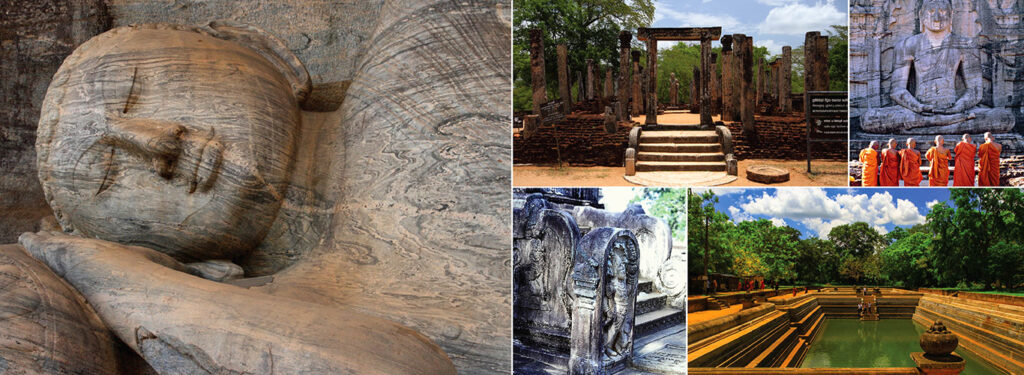
If you’re a travel enthusiast seeking your next exotic destination, look no further than Polonnaruwa. Nestled in the heart of Sri Lanka, this ancient city is a treasure trove of history, culture, and stunning landscapes. Whether you’re a history buff, a nature lover, or simply in search of adventure, Polonnaruwa offers something for everyone. This blog will guide you through the must-see tourist attractions and the best locations in Polonnaruwa, ensuring you make the most of your visit.
Discovering Polonnaruwa; A Comprehensive Guide to Sri Lanka’s Ancient Capital
Polonnaruwa, a city steeped in history and rich in cultural heritage, offers a mesmerizing glimpse into Sri Lanka’s glorious past. This ancient city, once the thriving capital of the island nation, is now a UNESCO World Heritage Site, drawing visitors from around the globe to its fascinating ruins and scenic landscapes. Whether you are a history enthusiast, a nature lover, or an adventurer, Polonnaruwa promises a journey that is both enlightening and exhilarating. In this article, we delve into the top travel destinations, tourist attractions, and the best locations in Polonnaruwa, ensuring you have all the information you need for an unforgettable visit.
Introduction to Polonnaruwa
Polonnaruwa served as the second capital of Sri Lanka after the decline of Anuradhapura. Established in the 11th century, it flourished under the reign of King Parakramabahu I, who transformed it into a well-planned city with impressive architectural achievements. Today, the city stands as a testament to the ingenuity and grandeur of ancient Sri Lankan civilization.
Desire and Action
As you delve deeper into Polonnaruwa, the desire to uncover its secrets grows. You can almost hear the whispers of ancient kings and the clamor of medieval marketplaces. This desire propels you to plan your journey, book your tickets, and set off on an adventure that promises to be both enriching and exhilarating.
Top Places to Visit in Polonnaruwa
1. The Royal Palace Group
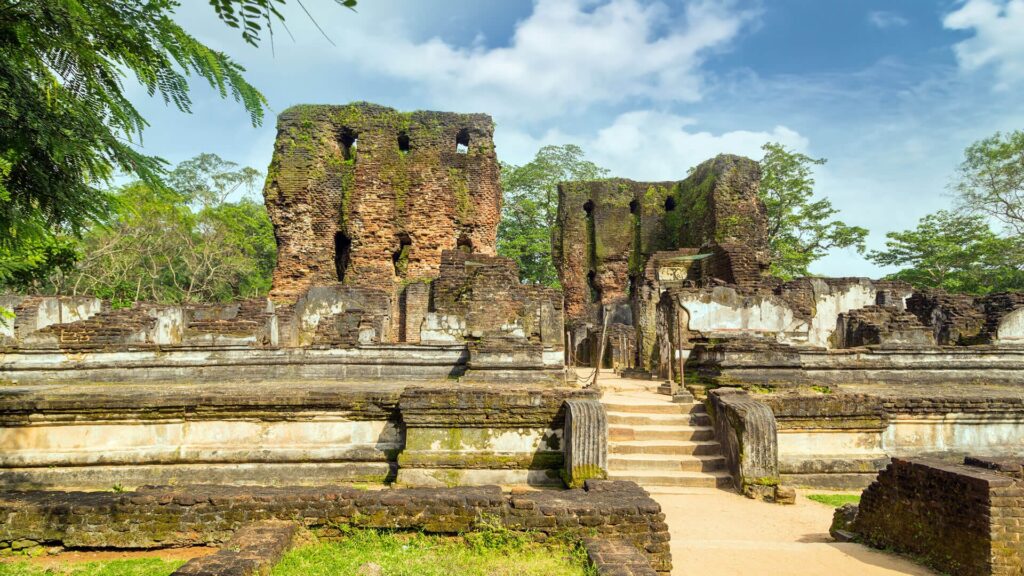
The Royal Palace Group is one of the most significant sites in Polonnaruwa. This vast complex includes the remnants of King Parakramabahu’s royal palace, audience hall, and other royal buildings. The palace, originally a seven-story structure, now stands as an imposing ruin, giving visitors a sense of the opulence that once existed. The audience hall, with its beautifully carved stone lions and intricate pillars, showcases the artistic brilliance of the era.
2. Gal Vihara
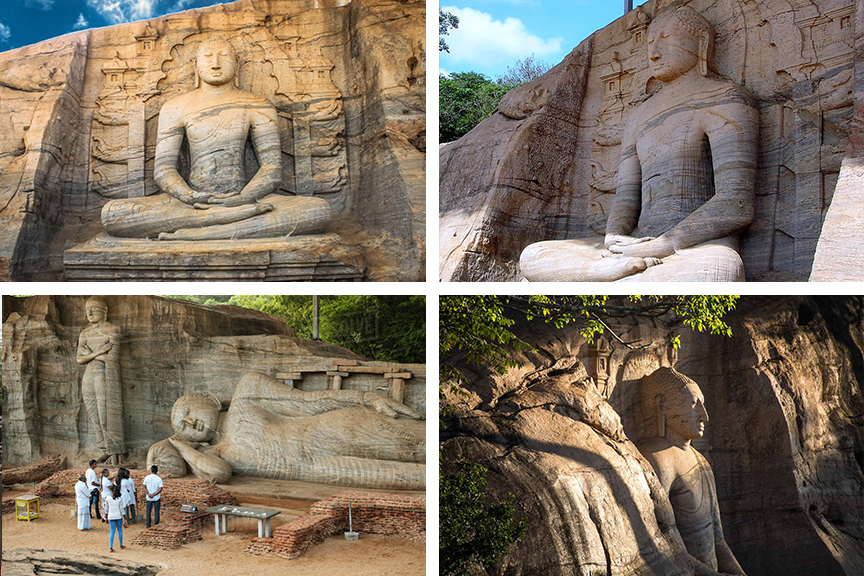
Gal Vihara, also known as the Rock Temple, is one of Polonnaruwa’s most iconic sites. This Buddhist temple complex features four statues of Buddha, carved into a single granite rock. Each statue, whether seated, standing, or reclining, is a masterpiece of ancient Sri Lankan art and spirituality.
3. The Sacred Quadrangle
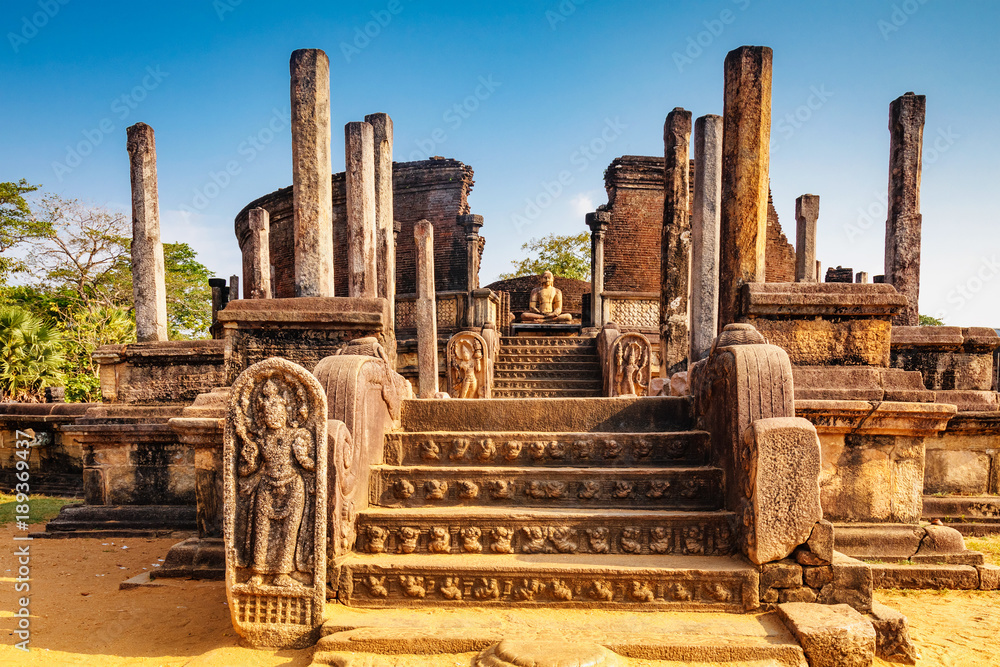
The Sacred Quadrangle, or Dalada Maluwa, is a compact group of religious buildings that orm the heart of Polonnaruwa’s spiritual heritage. Key highlights include the Vatadage, a circular relic house with intricately carved stone pillars and stupas; the Thuparama, an image house a large seated Buddha; and the Hatadage, a shrine that once held the Sacred Tooth Relic. The Sacred Quadrangle’s architectural beauty and historical significance make it a must-visit site.
4. Parakrama Samudra
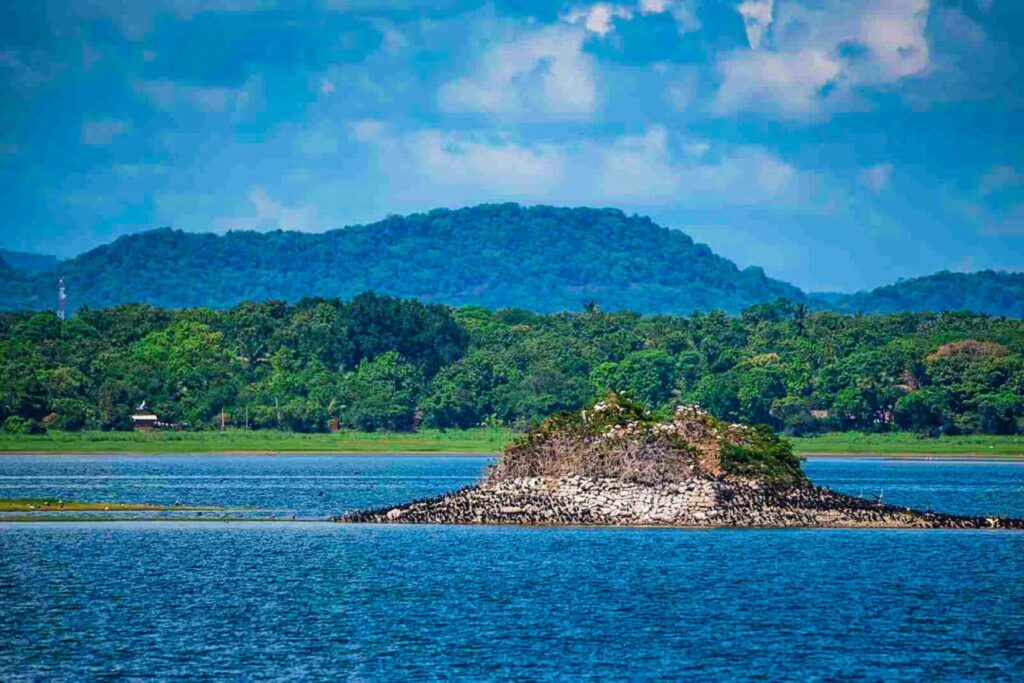
Parakrama Samudra, a vast man-made reservoir, is a testament to the advanced engineering skills of ancient Sri Lankans. Built by King Parakramabahu I, this massive body of water not only provided irrigation for agriculture but also enhanced the city’s aesthetic appeal. Today, it remains a picturesque spot for leisurely boat rides and peaceful walks along its shores.
5. Rankot Vihara
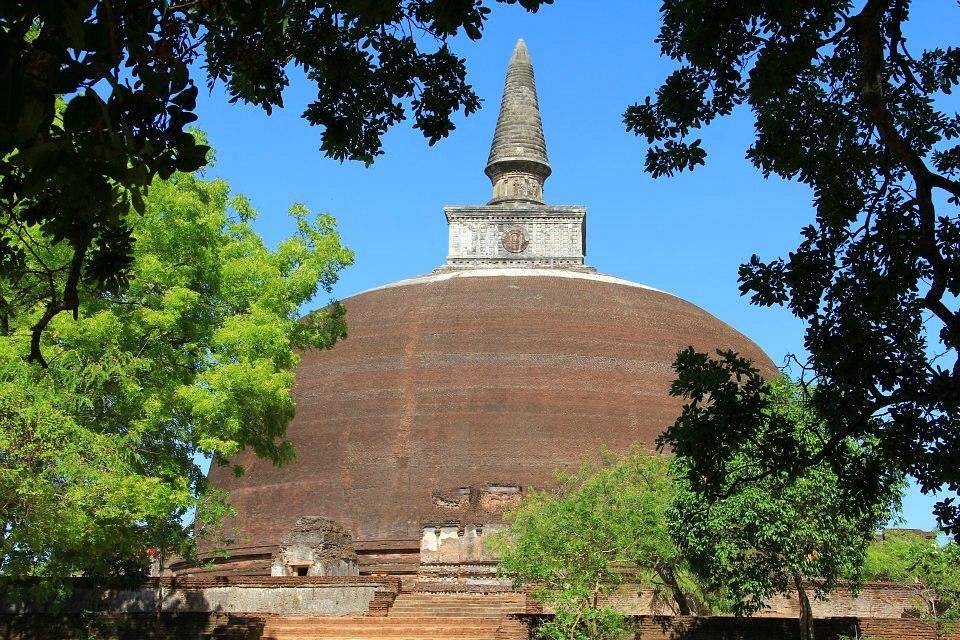
.Rankot Vihara is the largest stupa in Polonnaruwa, standing at an impressive height of 55 meters. This monumental structure, surrounded by smaller shrines and prayer halls, offers a glimpse into the religious fervor and architectural prowess of the time. Climbing to the top provides a panoramic view of the surrounding area, making it a rewarding experience for visitors.
6. Lankatilaka Image House
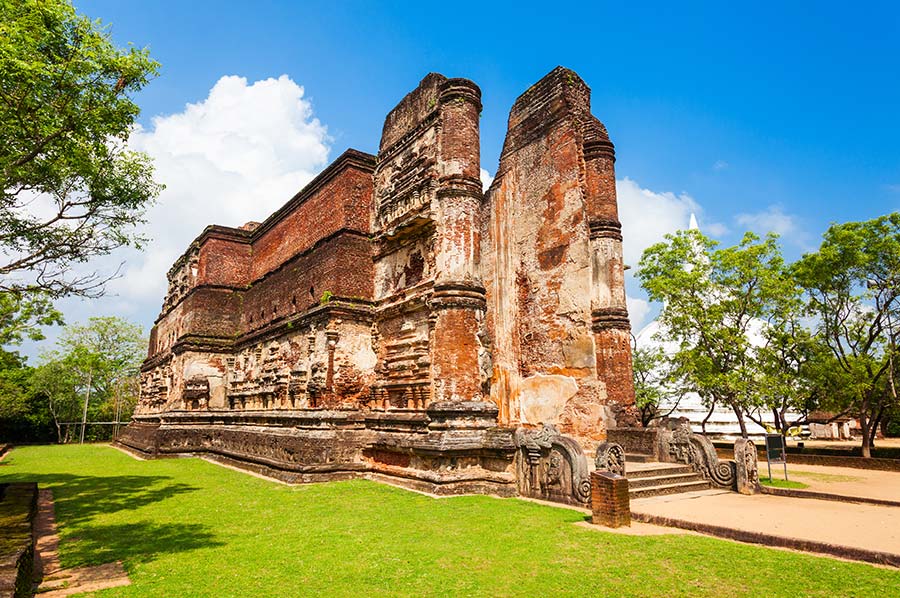
Lankatilaka Image House is renowned for its colossal standing Buddha statue, which stands at a height of 12 meters. The walls of the image house are adorned with intricate carvings depicting various scenes from Buddhist mythology. The grandeur and spiritual significance of Lankatilaka make it a standout attraction in Polonnaruwa.
7. Pothgul Vihara
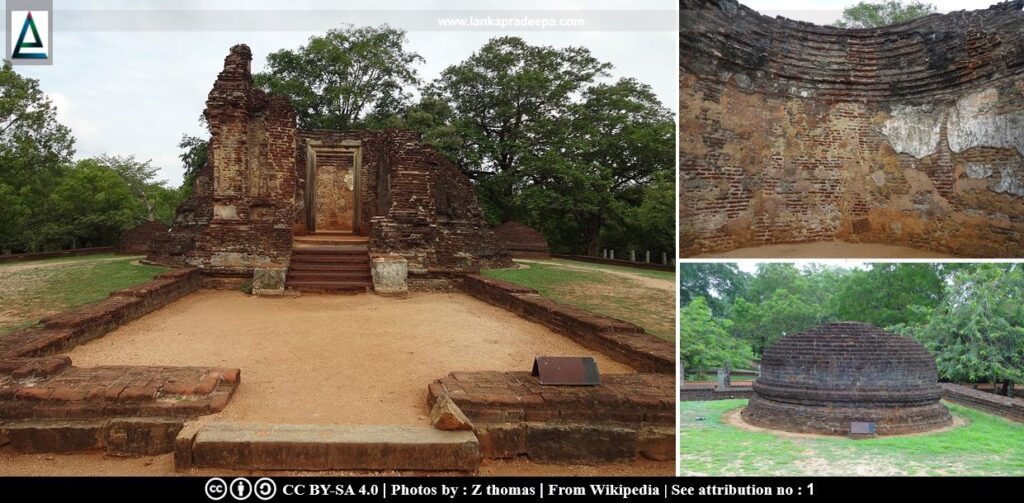
Pothgul Vihara is a unique site that served as an ancient library and a meditation center. The ruins include a circular structure believed to have been the library and several smaller meditation chambers. The site exudes a peaceful ambiance, perfect for reflecting on the rich history of Polonnaruwa.
8.The Statue of King Parakramabahu
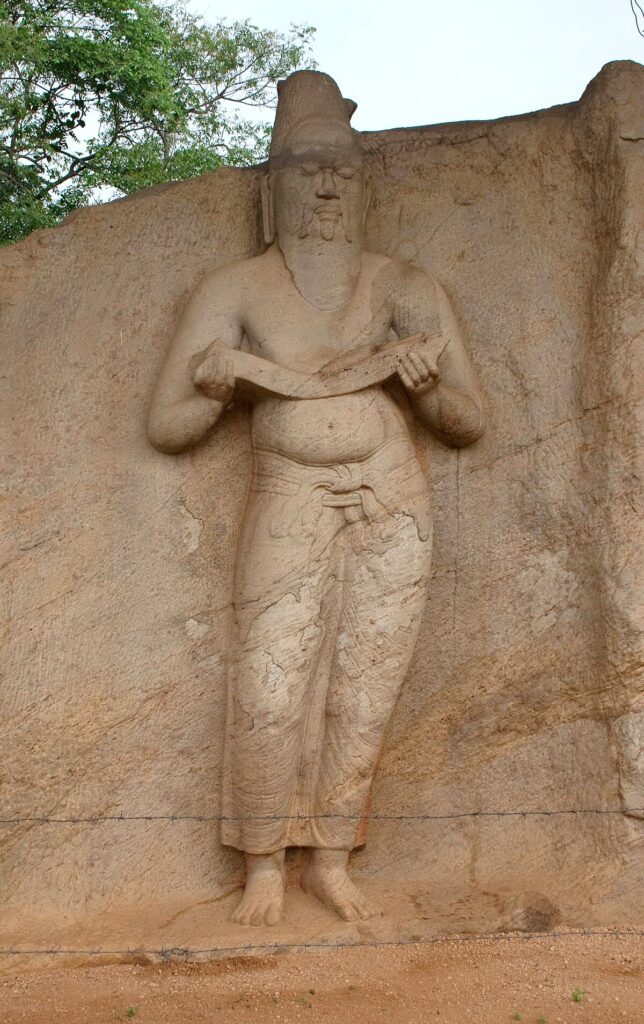
This imposing statue, believed to be of King Parakramabahu, stands near the Parakrama Samudra. The king’s determined expression and commanding presence reflect his significant contributions to Polonnaruwa’s development.
9.The Archaeological Museum
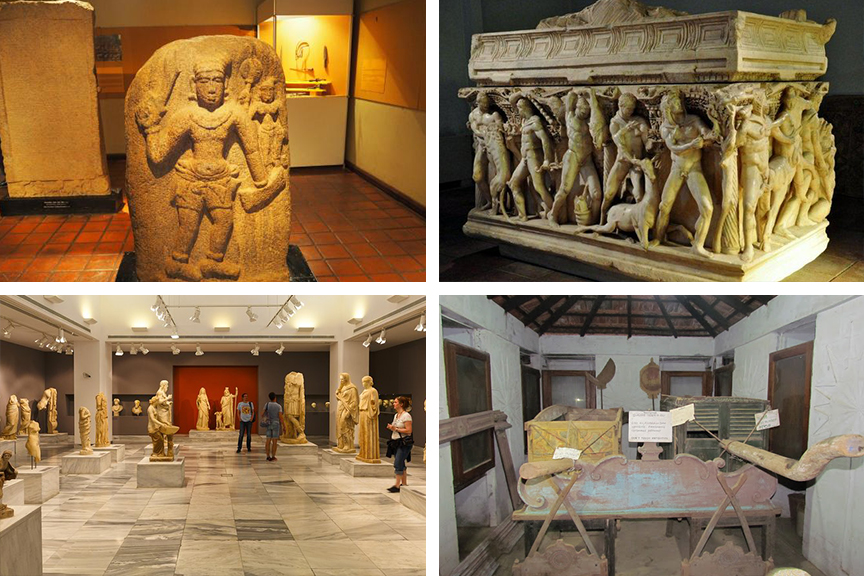
The Archaeological Museum in Polonnaruwa offers an excellent introduction to the city’s history and heritage. The museum houses a wide range of artifacts, including sculptures, inscriptions, and models of ancient buildings, providing valuable insights into the daily life and culture of Polonnaruwa’s inhabitants. A visit to the museum is highly recommended for a deeper understanding of the city’s past.
Located near Parakrama Samudra, the statue of King Parakramabahu is an imposing figure believed to depict the great king himself. Standing at a height of over 3 meters, the statue’s commanding presence and detailed craftsmanship highlight the king’s significant contributions to Polonnaruwa’s development. The statue is a popular spot for photography and reflection on the city’s illustrious history.
10.Kiri Vihara
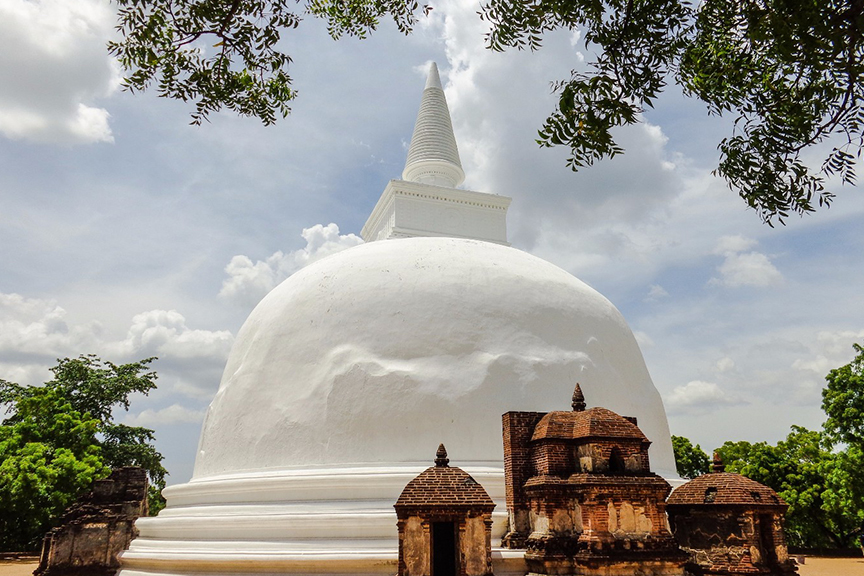
Kiri Vihara is another prominent stupa in Polonnaruwa, known for its impressive size and well-preserved condition. Unlike other stupas, Kiri Vihara retains much of its original lime plaster, giving it a distinctive white appearance. The stupa, surrounded by lush greenery, offers a serene setting for visitors to appreciate the city’s spiritual heritage.
Question
How can you efficiently explore Polonnaruwa and experience its best travel destinations?
Answer
Here’s a suggested itinerary to help you navigate Polonnaruwa efficiently:
Day 1: The Royal Palace and Sacred Quadrangle
Start your day at the Royal Palace Group. Spend the morning exploring the audience hall, council chamber, and the various ruins within the complex.
Head to the Sacred Quadrangle next. Allocate a few hours to marvel at the Vatadage, Thuparama, and other ancient structures.
End your day with a visit to Gal Vihara. The serene evening atmosphere enhances the beauty of the Buddha statues.
Day 2: Parakrama Samudra and Surroundings
Begin with a morning walk around Parakrama Samudra. Enjoy the tranquility and perhaps a boat ride.
Visit the nearby Rankot Vihara, the largest stupa in Polonnaruwa, followed by the Lankatilaka Image House, known for its massive standing Buddha statue.
Conclude your day at the Pothgul Vihara, an ancient library and meditation site.
Climate and Best Time to Visit
Polonnaruwa experiences a tropical climate, with warm temperatures year-round. The best time to visit is during the dry season, from May to September, when the weather is ideal for exploring the outdoor sites.
Getting There
Polonnaruwa is accessible by road and rail. The nearest airport is in Colombo, from where you can take a train or bus to Polonnaruwa. Alternatively, hire a car for a more comfortable journey.
Trips for Travelers
-Wear comfortable shoes: You’ll be doing a lot of walking.
-Stay hydrated: Carry water, especially when exploring during the hot hours.
-Respect the sites: Many of the locations are religious and historical; dress modestly and avoid loud behavior.
Engaging Question
Have you ever visited an ancient city that left a lasting impression on you? Share your experiences in the comments below and let us know what captivated you the most!
Accommodation
Polonnaruwa offers a range of accommodation options to suit different budgets and preferences. From budget-friendly guesthouses to luxury hotels, there are plenty of choices available. It is advisable to book in advance, especially during peak tourist seasons, to secure the best accommodations.
What is the best time to visit Polonnaruwa?
The best time to visit Polonnaruwa is during the dry season, from May to September, when the weather is ideal for exploring the outdoor sites.
How do I get to Polonnaruwa?
Polonnaruwa is accessible by road and rail. The nearest airport is in Colombo, from where you can take a train or bus to Polonnaruwa. Hiring a car is also a comfortable option.
What are the must-see sites in Polonnaruwa?
Must-see sites include the Royal Palace Group, Gal Vihara, the Sacred Quadrangle, Parakrama Samudra, Rankot Vihara, and Lankatilaka Image House.
Is there accommodation available in Polonnaruwa?
Yes, Polonnaruwa offers a range of accommodation options, from budget guesthouses to luxury hotels. It’s advisable to book in advance, especially during peak tourist seasons.
What should I wear when visiting Polonnaruwa?
Wear comfortable shoes for walking and dress modestly, as many sites are religious. Carry water to stay hydrated, especially when exploring during the hot hours.


